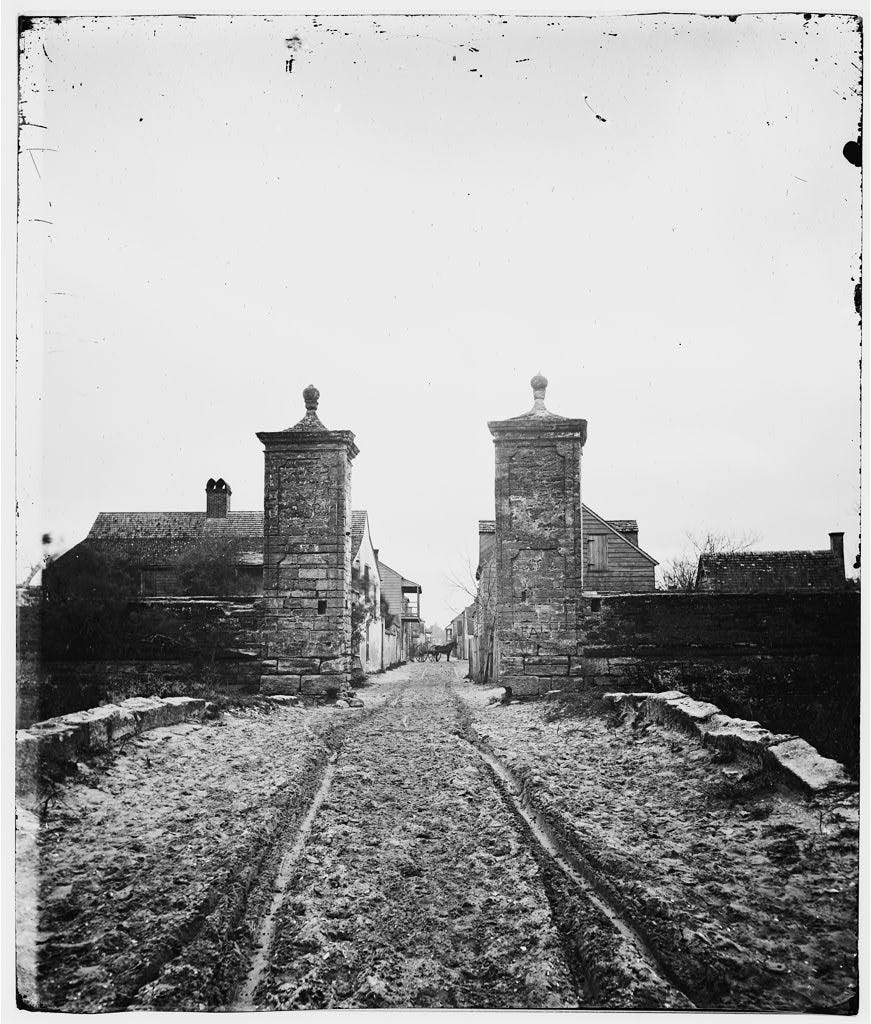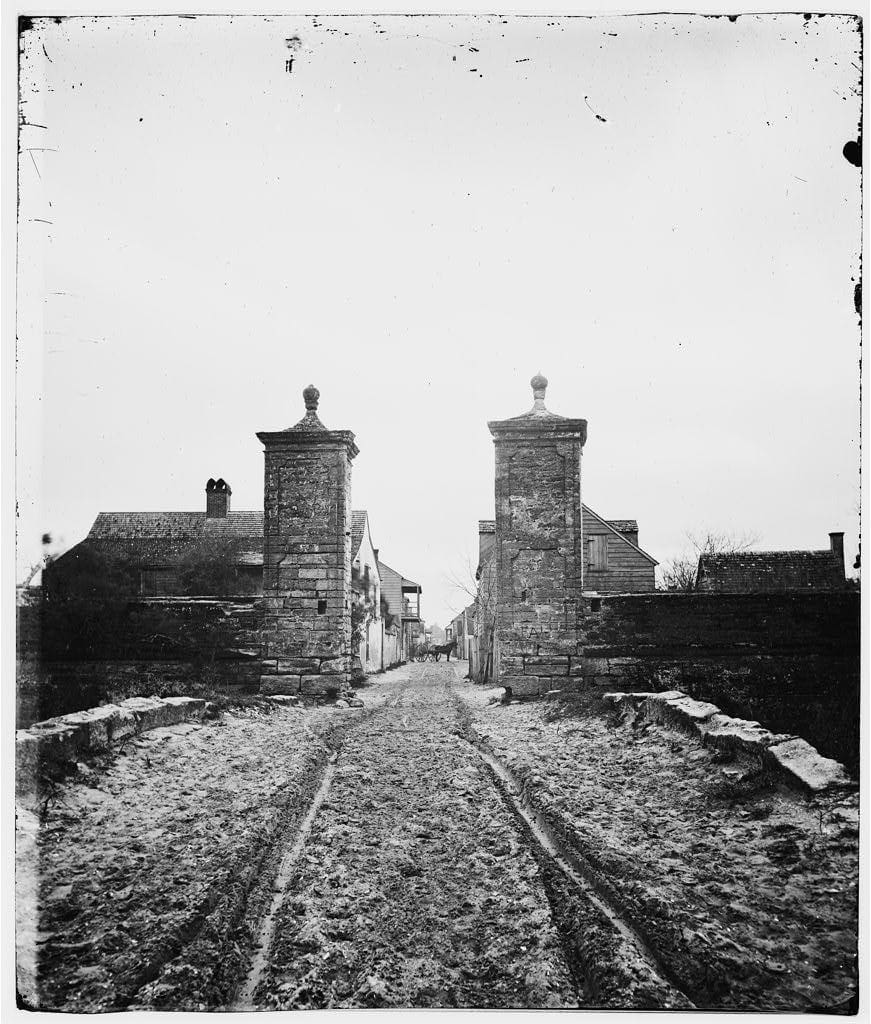America’s Oldest City With 450 Years of Tumultuous History
Battling nations, regime changes, and hurricanes

Tucked along Florida’s Atlantic coast, the colorful colonial town of St. Augustine boasts a history like no other place in America.
Since its founding by Spanish explorers in 1565, this scenic city has survived wars, pirate raids, regime changes, and countless hurricanes.
From a fragile outpost to a bustling British colony to a playground for America’s wealthy elite, St. Augustine has worn many identities over its 450-year lifespan.
This is the story of the nation’s oldest continuously occupied European-established settlement.
The fountain of youth and Florida’s first colony
The tangled mangroves and shimmering waters of northeast Florida were a mystery to most Europeans in the 16th century.
Also, the alligators.
But rumors of a restorative “Fountain of Youth” in a place called La Florida drove an intrepid explorer named Juan Ponce de León to mount an expedition in 1513.
While Ponce de León never found the mythical fountain, he did claim La Florida for the Spanish crown and establish a short-lived settlement.
Over the next 50 years, Spain and France would tussle over control of Florida, with colonies sprouting up and quickly failing in the unfamiliar territory.
That changed in 1565 when the Spanish dispatched a rugged navy commander named Pedro Menéndez de Avilés to clear out the French and secure Florida for Spain.
After driving the French from their colony at Fort Caroline, Menéndez founded a new settlement called San Agustín — the first permanent European foothold in what is now the continental United States.
Battling pirates and hurricanes in the New World
From the start, St. Augustine’s survival was anything but assured.
As a lonely outpost on the edge of the Spanish empire, it endured frequent pirate raids, destructive hurricanes, and clashes with local native tribes.
In 1586 the English privateer Sir Francis Drake torched the entire town, sparing only the masonry church.
Shortly after being rebuilt, St. Augustine faced threat from the north when the English founded their own colony at Jamestown, Virginia in 1607.
For protection, the Spanish constructed the imposing Castillo de San Marcos stone fort from 1672 to 1695 — the formidable citadel still stands watch over St. Augustine today.
Soldiers manned the Castillo’s cannon to defend against both pirates and hurricanes, allowing St. Augustine to persist through many close brushes with destruction.
Life in Spanish colonial Florida
During Spain’s 166-year reign, St. Augustine was the capital of Spanish Florida and an important military bastion. But it was also a small colonial village defined by the Catholic Church.
Missions to convert the native Timucua and Apalachee shaped life on the remote frontier.
A diverse mix of colonists, soldiers, missionaries, slaves, and native Floridians of different tribes populated St. Augustine, though rarely topping 1,500 residents. They built up the modest settlement using the coquina shellstone that gave St. Augustine’s architecture its distinctive look.
Strict Spanish codes governed town life and architecture, with features like large central plazas, narrow streets, and secluded inner courtyards. This Spanish atmosphere persevered even as the British briefly seized St. Augustine.
St. Augustine under the Redcoat
In 1763, after losing the Seven Years’ War, Spain ceded Florida to Britain in exchange for Havana, Cuba.
The British quickly claimed St. Augustine, renaming it West Florida and making it the capital of the eastern Florida colony.
Under British rule, St. Augustine became a typical 1 colonial town. The British constructed new public buildings in their signature Georgian style, which married elegant symmetry with post-medieval English design.
But friction with Native Americans like the Seminoles led many British settlers to abandon Florida. When Spain regained control in 1783, the Spanish crown’s grip on St. Augustine was restored.
From Spanish town to American city
In 1821, after centuries of being passed between Spain and England, Florida was finally sold to the United States. Americans anglicized the city’s Spanish name to Saint Augustine and designated it the capital of the new Florida Territory in 1824.
St. Augustine kept its exotic Spanish flair even under Yankee rule. As the 19th century progressed, the Ancient City became a fashionable winter resort for America’s wealthy, drawn to its history, architecture, and romantic atmosphere.
Industrialists like Henry Flagler soon transformed St. Augustine, building lavish hotels and railroads that catered to Gilded Age tourists. Many striking buildings like the opulent Ponce de León Hotel date to this era, giving St. Augustine its hybrid Spanish-Victorian architectural identity.
Present day
Today, St. Augustine remains a vibrant hub of activity, drawing over 6 million visitors annually to walk its charming colonial streets, take in live history reenactments, or relax on nearby sandy beaches.
More than a tourist attraction, St. Augustine is a living testament to the origins of European settlement in America.
The footsteps of Spanish explorers, British soldiers, enslaved peoples, Gilded Age entrepreneurs, and modern travelers all intermingle here, echoing across more than four centuries of change.








